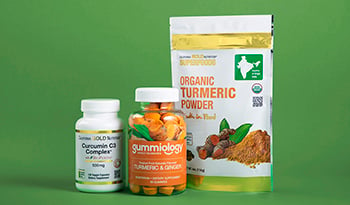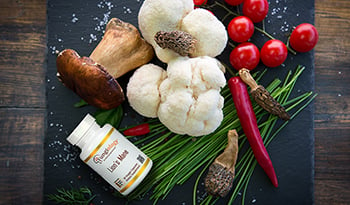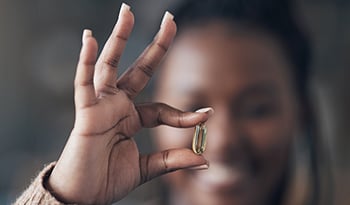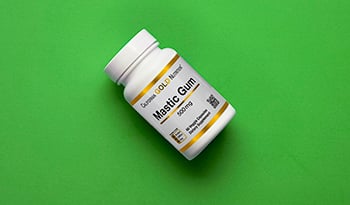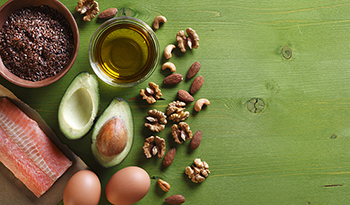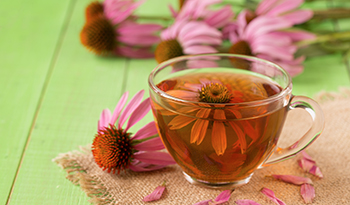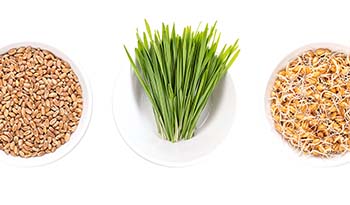Bee Pollen, Propolis, & Royal Jelly: Incredible Health Benefits

Bees are amazing and critical to life on earth given their essential role in pollinating plants. Albert Einstein is often quoted as saying "If the bee disappears from the surface of the earth, man would have no more than four years to live." Recently, there has been a decline in bee numbers in North America due to a phenomenon known as Colony Collapse Disorder (CCD). There is a lot of factors suggested as a cause of CCD such as pesticides, pathogens, and beekeeping practices, but no single factor has been found with enough consistency to suggest that it is the sole cause.
In addition to their role in pollination, bees also provide us with some wondrous nutritional products. Not only the sweetness of honey, but also the tremendous health benefits offered by bee pollen, propolis, and royal jelly. Historically, these bee products have been highly valued within the natural products industry, but it seems that many retailers have forgotten just how valuable these foods are to improving health. Here is a brief description of these products:
- Bee pollen comes from the male germ cells of flowering plants. As the honeybee travels from flower to flower, it fertilizes the female germ cell. Honeybees enable the reproduction of more than 80% of the world’s grains, fruits, vegetables, and legumes. The pollen is collected and brought to the hive, where the bees add enzymes and nectar to the pollen. It is important to recognize that one teaspoon of bee pollen would take a single bee working eight hours a day for one month to gather.
- Propolis is the resinous substance collected by bees from the leaf buds and barks of trees, especially poplar and conifer trees. The bees use the propolis, along with beeswax, to construct the hive. Propolis has antimicrobial activities that help the hive block out viruses, bacteria, and other organisms.
- Royal jelly is a thick, milky substance produced by worker bees to feed the queen bee. The worker bees mix honey and bee pollen with enzymes in the glands of their throats to produce royal jelly. Royal jelly is believed to be a useful nutritional supplement because of the queen bee’s superior size, strength, stamina, and longevity compared with other bees.
History and Folk Use
The use of bee products for medicinal purposes is as old as beekeeping itself. Chinese texts more than 2000 years old include many mentions of bee products. Hippocrates also wrote about them. Honey was so valued during Roman times that it was often used instead of gold to pay taxes.
Of the bee products, propolis was the most valued as a medicinal agent. For example, propolis-making bees were depicted on vases from ancient Egypt, where the sign of the bee was often interwoven with the titles of the kings and used as the motif on ornaments presented as rewards for valor. The ancient Egyptians looked upon bees and their propolis as the source of eternal health and life.
Nutritional Benefits
Bee pollen is often referred to as “nature’s most perfect food.” It is especially rich in protein (typically containing 35-40% total protein) and it is a complete protein meaning it contains all eight essential amino acids. In fact, bee pollen is higher in protein content than any animal source and about half of its protein is in the form of free amino acids that are ready to be used directly by the body. Bee pollen also provides significant levels of B vitamins, vitamin C, carotenes, minerals, DNA, RNA, numerous flavonoid molecules, and plant hormones.
Propolis and royal jelly have similar nutritional qualities to pollen but considerably higher levels of different biologically active compounds such as polyphenols.1,2 Royal jelly contains approximately 12% protein, 5% to 6% lipids, and 12% to 15% carbohydrates.
Scientific Research
The health benefits of bee products are much-heralded but insufficiently researched in human clinical trials. Some overlap exists in the uses of pollen, propolis, and royal jelly to promote health.
Popular Health Applications for Bee Products:
Bee pollen |
|
Propolis |
|
Royal jelly |
|
Bee Pollen
Little research has been done on bee pollen, probably because financial rewards to justify such an investment are lacking. The research that does exist is limited but impressive. For example, studies in animals show that pollen can promote growth and development; improve semen quality; increase fertility percentage; protect against free radical and oxidative damage; and protect against the effects of harmful radiation, as well as toxic exposure to chemical solvents.3-5
In a human study, a pollen extract has also been shown to produce significant improvement in menopausal symptoms (headache, urinary incontinence, dry vagina, decreasing vitality) in double-blind studies.6 The improvements were achieved even though the pollen extract produces no estrogenic effect, an important consideration for women who cannot take estrogens of any kind.7
Propolis
The primary use of propolis has been in immune system enhancement and infections. Propolis has inherent antimicrobial activity that protects the hive block from viruses, bacteria, and other organisms. Propolis has shown considerable antimicrobial activity in experimental studies.8-10 Propolis also stimulates the immune system, according to preliminary human studies.11,12 In experimental studies have also shown that propolis exerts some antioxidant, liver-protecting, anti-inflammatory, and anticancer properties.13-17
A key use of propolis is protection against and shortening the duration of the common cold. A preliminary human study reported that propolis extract reduced the risk of upper respiratory infections in children.11 And in a double-blind study of 50 patients with the common cold, the group taking propolis extract became symptom-free far more quickly than the placebo group.18
One of the most popular delivery methods for propolis is via an oral spray. One double-blind study looked at the effects an oral spray containing a propolis extract in 122 healthy adults with mild common cold symptoms.19 The dosage of 2-4 sprays three times/day produced resolution of symptoms two days earlier in the propolis group (three days versus five days. There were no adverse reactions in either group.
The antimicrobial properties of propolis may also help protect against parasitic infections in the gastrointestinal tract and vaginal yeast infections based upon preliminary studies.20-21
Royal Jelly
Long revered as an anti-aging and energy-restorative traditional medicine, royal jelly consumption has been shown to increase in the lifespan of bees and a variety of other species, including mice. It showed a myriad of anti-aging effects in experimental studies. For example, royal jelly has shown particular anti-aging effects on the skin, increasing skin collagen levels in animal studies thereby improving skin elasticity and strength. And n mice studies, long-term administration of royal jelly improved memory and physical performance of the treated animals. It also increased muscle stem cells and prevented age-related muscle loss.22,23
In a human study to gauge the impact of royal jelly in improving muscle strength in elderly nursing home residents, 194 subjects received either a placebo, 1.2 g/day of royal jelly, or 4.8 g/d of royal jelly for one year. The primary outcome measure was handgrip strength. While the study failed to show improved strength with royal jelly, what it did show was that it slows down the progression of decrease in muscle strength in elderly people.24
A key area of focus in the clinical use of royal jelly is during and after menopause.2,22,23 This application was recently assessed in a double-blind clinical trial.25 The study population consisted of 200 postmenopausal women (ages 45-60 years). Each participant received either 1,000 mg of royal jelly capsules or a placebo daily for eight weeks. The total menopausal symptom score was significantly reduced in the royal jelly group but did not in the placebo group. The scale consisted of 11 menopausal symptoms, including depressive mood, irritability, heart palpitations, hot flashes, anxiety, sexual problems, sleep disorders, bladder problems, muscle dysfunction, and vaginal dryness.
In addition to menopause, royal jelly has shown significant beneficial effects in women with premenstrual syndrome (PMS). In one double-blind study in 110 female medical students with PMS, those taking a capsule of 1,000 mg royal jelly capsule orally per day throughout two consecutive menstrual cycles showed a drop in the PMS symptom score from 23.17 to 11.42 while the placebo group changed from 21.48 to 20.27. Symptoms improved included fatigue, irritability, tension, breast tenderness, and bloating.2,26
Another area of interest is the cholesterol-lowering effect of royal jelly. As of April 2021, 11 human studies have been published, 8 of which were double-blind.2,27 Of the eight double-blind studies, four used an oral preparation, and an injectable form was used in the other four studies. Results of a detailed analysis of the double-blind studies indicate that with oral preparations, despite shortcomings in the design of the studies and lack of standardization with commercial preparations used, royal jelly can decrease total cholesterol levels by about 14% in patients with moderate to severe elevations in blood cholesterol levels (initial values ranging from 210 to 325 mg/dl). Even better results may be noted when using higher-quality royal jelly products.
Dosage Recommendations
- Bee pollen: usually 1 to 3 tablespoons daily
- Propolis: 100 to 500 mg three times daily
- Royal jelly: 250 to 500 mg of royal jelly one to two times daily
Side Effects
Allergic reactions are the most common side effects with bee products. Otherwise, no significant side effects are produced. If there is a known allergy to conifer and poplar trees, the use of propolis should be avoided as it may produce more serious allergic reactions.28 No drug interactions are known.
References:
- Burdock G.A.. Review of the biological properties and toxicity of bee propolis (propolis). Food Chem Toxicol (1998) 36 347–363.
- Ahmad S.; Campos M.G.; Fratini F.; et al. New Insights into the Biological and Pharmaceutical Properties of Royal Jelly. Int J Mol Sci. (2020) 21(2) 382.
- Qian B.; Zang X.; Liu X.. Effects of bee pollen on lipid peroxides and immune response in aging and malnourished mice. Zhongguo Zhong Yao Za Zhi (1990) 15 301–303. 319
- Xie Y.; Wan B.; Li W.. Effect of bee pollen on maternal nutrition and fetal growth. Hua Xi Yi Ke Da Xue Xue Bao (1994) 25 434–437. [Chinese].
- Ceglecka M.; Wojcicki J.; Gonet B.; et al. Effect of pollen extracts on prolonged poisoning of rats with organic solvents. Phytother Res (1991) 5 245–249.
- Szanto E.; Gruber D.; Sator M.; et al. Placebo-controlled study of melbrosia in treatment of climacteric symptoms. Wien Med Wochenschr (1994) 144 130–133.
- Einer-Jensen N.; Zhao J.; Andersen K.P.; et al. Cimicifuga and Melbrosia lack oestrogenic effects in mice and rats. Maturitas (1996) 25 149–153.
- Tosi B.; Donini A.; Romagnoli C.; et al. Antimicrobial activity of some commercial extracts of propolis prepared with different solvents. Phytother Res (1996) 10 335–336.
- Dobrowolski J.W.; Vohora S.B.; Sharma K.; et al. Antibacterial, antifungal, antiamebic, antiinflammatory and antipyretic studies on propolis bee products. J Ethnopharmacol (1991) 35 77–82.
- Tichy J.; Novak J.. Detection of antimicrobials in bee products with activity against viridans streptococci. J Altern Complement Med (2000) 6 383–389.
- Bratter C.; Tregel M.; Liebenthal C.; et al. Prophylactic effectiveness of propolis for immunostimulation: a clinical pilot study. Forsch Komplementarmed (1999) 6 256–260.
- Crisan I.; Zaharia C.N.; Popovici F.; et al. Natural propolis extract NIVCRISOL in the treatment of acute and chronic rhinopharyngitis in children. Rom J Virol (1995) 46 115–133.
- Pascual C.; Gonzalez R.; Torricella R.G.. Scavenging action of propolis extract against oxygen radicals. J Ethnopharmacol (1994) 41 9–13.
- Lin S.C.; Lin Y.H.; Chen C.F.; et al. The hepatoprotective and therapeutic effects of propolis ethanol extract on chronic alcohol-induced liver injuries. Am J Chin Med (1997) 25 325–332.
- Khayyal M.T.; El-Ghazaly M.A.; El-Khatib A.S.. Mechanisms involved in the antiinflammatory effect of propolis extract. Drugs Exp Clin Res (1993) 19 197–203.
- Mirzoeva O.K.; Calder P.C.. The effect of propolis and its components on eicosanoid production during the inflammatory response. Prostaglandins Leukot Essent Fatty Acids (1996) 55 441–449.
- Choi Y.H.; Lee W.Y.; Nam S.Y.; et al. Apoptosis induced by propolis in human hepatocellular carcinoma cell line. Int J Mol Med (1999) 4 29–32.
- Szmeja Z.; Kulczynski B.; Sosnowski Z.; et al. Therapeutic value of flavonoids in Rhinovirus infections. Otolaryngol Pol (1989) 43 180–184. [Polish].
- Esposito C.; Garzarella E. U.; Bocchino B.; et al. A standardized polyphenol mixture extracted from poplar-type propolis for remission of symptoms of uncomplicated upper respiratory tract infection (URTI): A monocentric, randomized, double-blind, placebo-controlled clinical trial. Phytomedicine (2021) 80 153368.
- Miyares C.; Hollands I.; Castaneda C.; et al. Clinical trial with a preparation based on propolis “propolisina” in human giardiasis. Acta Gastroenterol Latinoam (1988) 18 195–201: [Spanish].
- Dalben-Dota K.F.; Faria M.G.; Bruschi M.L.; et al. Antifungal activity of propolis extract against yeasts isolated from vaginal exudates. J Altern Complement Med (2010) 16 285–290.
- Bălan A.; Moga MA; Dima L.; Toma S.; Elena Neculau A.; Anastasiu V.V. Royal Jelly-A Traditional and Natural Remedy for Postmenopausal Symptoms and Aging-Related Pathologies. Molecules.
DISCLAIMER:This Wellness Hub does not intend to provide diagnosis...













































































 Table of Contents
Table of Contents



